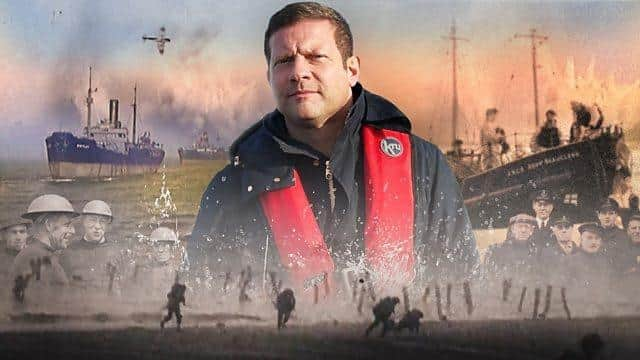The story of the RNLI’s heroic efforts during the Second World War
and live on Freeview channel 276
The RNLI is celebrating its 200th anniversary this year. Originally known as the National Institution for the Preservation of Life from Shipwreck, it has saved a countless number of people in the waters around the UK, the Republic of Ireland, Channel Islands, the Isle of Man and some inland waterways.
It’s certainly an institution to be proud of. Staffed mostly by volunteers, it’s funded via combination of legacies, donations, merchandising and investment, which help keep its 444 lifeboats stationed at 238 locations operational.
Advertisement
Hide AdAdvertisement
Hide AdPerhaps the busiest period in the RNLI’s history came during the Second World War, with the threat of invasion and enemy activity creating tension and difficulties, while downed aircrew often needed to be plucked from the English Channel and North Sea. Despite the presence of mines in the area, lifeboat crews rescued more than six thousand people – and it’s their exploits during this time that are highlighted in an enthralling documentary.


Dermot O’Leary may seem an odd choice to present it – some viewers may have thought a historian like Dan Snow might have been better placed – but after spending much of his childhood on the south east coast, where the RNLI were particularly needed during the conflict, he feels a strong affinity for the organisation.
“Growing up near, and spending so much time on, and in, the sea, the RNLI and its incredible crews of volunteers were always a constant, reassuring presence of my youth,” claims the This Morning host. “All of us in the UK and Ireland owe it a huge debt.
“As well as having been an ambassador for over 20 years, I’m a huge history fan. For me it’s always been about ordinary people in extraordinary circumstances. I’m really excited to investigate this little-known history, and find out how these lifeboat crews played such a pivotal role in the war effort.”
Advertisement
Hide AdAdvertisement
Hide AdDuring this special edition of the popular series, O’Leary visits some of the key wartime coastal locations, and takes to the sea in an effort to soak up (no pun intended) the atmosphere while imagining what it must have been like to be a crew member as bombs dropped and bullets flew.
But the programme really comes to life when he hears the stories of those who participated in daring rescues from their descendants. Local history experts are also on hand to reveal incredible and largely previously unheard tales. Among them are chilling and moving anecdotes relating to key moments during the conflict, including the Battle of Britain and the evacuation of Dunkirk. Nineteen lifeboats were among the famous ‘little ships’ that made their way to the French coast, with the coxswains from the Margate and Ramsgate vessels receiving the Distinguished Service Medal for their ‘gallantry and determination when ferrying troops from the beaches’.
“I’m delighted that Dermot O’Leary is immersing himself in the extraordinary stories of the incredible characters who played such a vital role in this period of history,” claims Clare Silvery, BBC Head of Commissioning, Documentaries. “Saving Lives at Sea is one of our most popular brands and this promises to be a very special programme.”